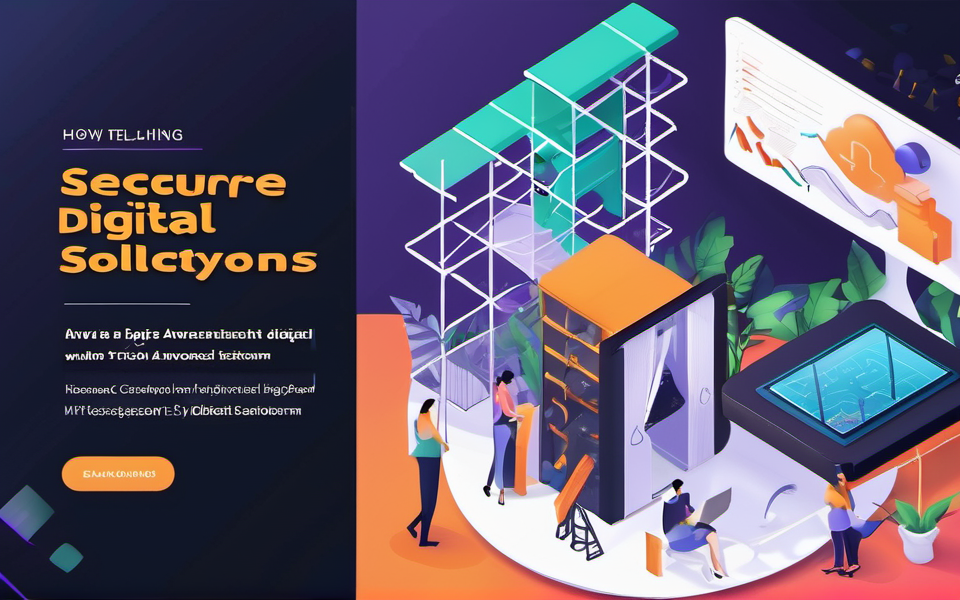Imagine a world where your data is an impenetrable fortress, where cyberattacks are a thing of the past, and your digital ecosystem thrives with unprecedented security. Sounds like a utopia, right? Well, with the right blend of advanced technical solutions and a strategic vision, you can unlock this secure digital future.
Building Your Digital Citadel: A Comprehensive Guide to Security
In the fast-paced digital landscape, where cyber threats evolve constantly, protecting your business’s core data is paramount. It’s not about simply installing an antivirus program, but rather establishing a holistic, multi-layered security architecture that anticipates and proactively mitigates threats.
1. Laying the Foundation: The Pillars of Cybersecurity
Think of cybersecurity as a fortress with multiple defense lines. Each layer provides protection, and together, they create a robust defense system.
a. Data Security: Your Digital Treasure
At the heart of your digital ecosystem lies your data – the lifeblood of your business. This is where strong encryption and access control protocols come into play. By implementing encryption algorithms like AES-256 and data loss prevention (DLP) solutions, you ensure that your sensitive information remains confidential, even if it falls into the wrong hands.
b. Network Security: Fortifying the Digital Perimeter
Think of your network as the entry point to your digital fortress. To ensure it’s secure, invest in firewalls, intrusion detection and prevention systems (IDS/IPS), and network segmentation, to prevent unauthorized access. This combination of technologies creates a perimeter defense system, keeping hackers at bay.
c. Endpoint Security: Securing Your Digital Gateway
Each endpoint – your laptops, desktops, mobile devices, and servers – acts as a potential entry point for attackers. Antivirus software and endpoint detection and response (EDR) solutions form the frontline of defense here, monitoring and protecting individual devices from malicious attacks.
d. Identity and Access Management (IAM): Controlling the Gates
Your digital citadel should only allow authorized individuals inside. IAM solutions enforce strict access control, ensuring that only those with the right credentials can access specific data and applications. This minimizes the risk of unauthorized access and data breaches.
The Power of Automation: Guarding Against Evolving Threats
As technology advances, cybercriminals become more sophisticated. To combat them, your digital defenses need to evolve as well. Enter the power of automation.
2. Automating Security Operations: A Proactive Defense
Instead of relying solely on reactive measures, automated security solutions are like vigilant guardians constantly scanning for threats.
a. Security Information and Event Management (SIEM): Real-Time Visibility and Analysis
Think of SIEM as your central command center for all security operations. It gathers logs and events from various systems, providing you with a unified view of your security posture in real-time. Powerful analytics capabilities can help detect anomalies and potential threats quickly, minimizing the damage caused by malicious activities.
b. Threat Intelligence: Staying Ahead of the Curve
Constantly evolving cyber threats demand proactive defense mechanisms. Threat intelligence feeds you with actionable information on emerging attack techniques and vulnerabilities, enabling you to anticipate and prepare for potential attacks before they occur.
c. Security Orchestration, Automation, and Response (SOAR): Efficient and Streamlined Threat Response
Imagine an automated system that handles repetitive tasks, allowing security professionals to focus on critical issues. SOAR platforms empower organizations with streamlined, efficient response strategies, automating routine security workflows and automating the process of investigation, containment, and remediation of security incidents.
3. Building a Secure Foundation: Key Practices
Apart from adopting advanced technologies, certain best practices ensure that your digital ecosystem remains secure.
a. Regular Security Audits and Penetration Testing
Like a routine health check-up, periodic security audits and penetration testing reveal any vulnerabilities or weaknesses in your systems. These assessments act as preventative measures, helping you strengthen your defenses and identify potential gaps before attackers exploit them.
b. Employee Security Training: Fostering a Security-Conscious Culture
A secure digital ecosystem thrives on a culture of cybersecurity awareness. Training your employees on secure password practices, phishing detection, and general security best practices fosters a responsible attitude towards digital security within your organization.
c. Data Backup and Recovery: Minimizing Downtime
Even with the most robust security measures in place, unexpected data loss can happen. Having a comprehensive data backup and disaster recovery plan is essential to mitigate data loss and minimize business disruptions in the event of a cyber attack or system failure.
Key Takeaways
Creating a secure digital ecosystem requires a proactive and multi-faceted approach. It’s about weaving a fabric of advanced technical solutions and best practices to secure your data, networks, and endpoints.
- Embrace a layered security architecture, employing advanced technologies like encryption, firewalls, and SIEM to defend your digital fortress.
- Invest in automated solutions that provide real-time visibility and enable proactive threat response.
- Encourage a security-conscious culture by training employees, conducting regular audits, and implementing data backup and recovery strategies.
In the end, the journey toward a secure digital ecosystem is continuous. It requires vigilance, constant adaptation, and a commitment to embracing advanced technology and best practices. But the reward? A thriving, secure digital environment where your data is protected, your business is resilient, and you can focus on what truly matters: driving innovation and growth.









